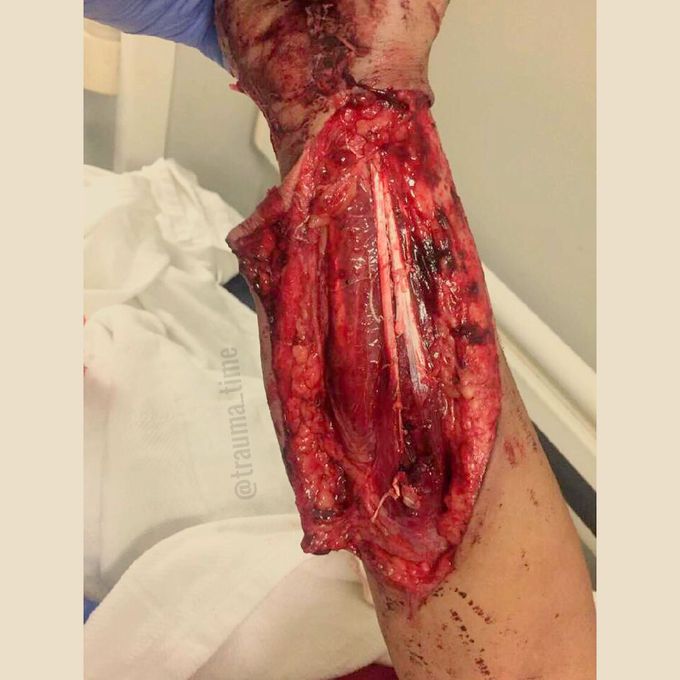


Traumatic Forearm Degloving
Today’s case we have a degloving of the right forearm! This patient was climbing over a fence when his arm got caught on the top, avulsing his arm, exposing these muscles! Quick, in the comments below, name the two superficial muscles seen (hint: one of them not everyone is born with)! Shockingly, this injury was purely a dermal one, and neurovascularity was 100% intact! So what does this mean? Well, the patient had full range of motion of wrist/hand, 5/5 grip strength in his right hand, sensation intact distally, and strong (2+) radial/ulnar pulses! Since the patient is hemodynamically stable and there is no muscle/bone involvement, the wound is able to be closed in the ED, following a thorough washout. Now, lets talk anesthetics, aka, medications to numb the area to ensure painless closure! So there are two ways this can be done with local anesthesia; a regional block, which covers a large area, or a local subcutaneous block, which covers a smaller section. A regional block is done with lidocaine and injected into a specific area of the nerve, proximal to the wound. In this case, you would inject in the upper arm, blocking the brachial plexus to cut off sensation to the distal arm. A local subcutaneous block is done with a lidocaine/epinephrine solution and would require multiple injections around the wound to cut off sensation to different nerve endings. So what’s the difference/benefits/risks to these methods? Well, epi is a vasoconstrictor, which means minimal bleeding will occur while closing. However, you have to make sure you do not exceed the max dose with the many injections due to an epi overdose; which could cause the patient to seize, eventually leading to cardiac arrest. Regional blocks are great ways to cover large areas with one needle stick, however, the downside is you’ll have a lot of bleeding when closing such a large area. The surgical resident decided to use multiple local subcutaneous lidocaine/epi injections for the closure! I have my opinions to the particular anesthesia method I would use and would love to hear your thoughts in the comments below!
Source: https://instagram.com/p/Bi0bYBYlIYz/

